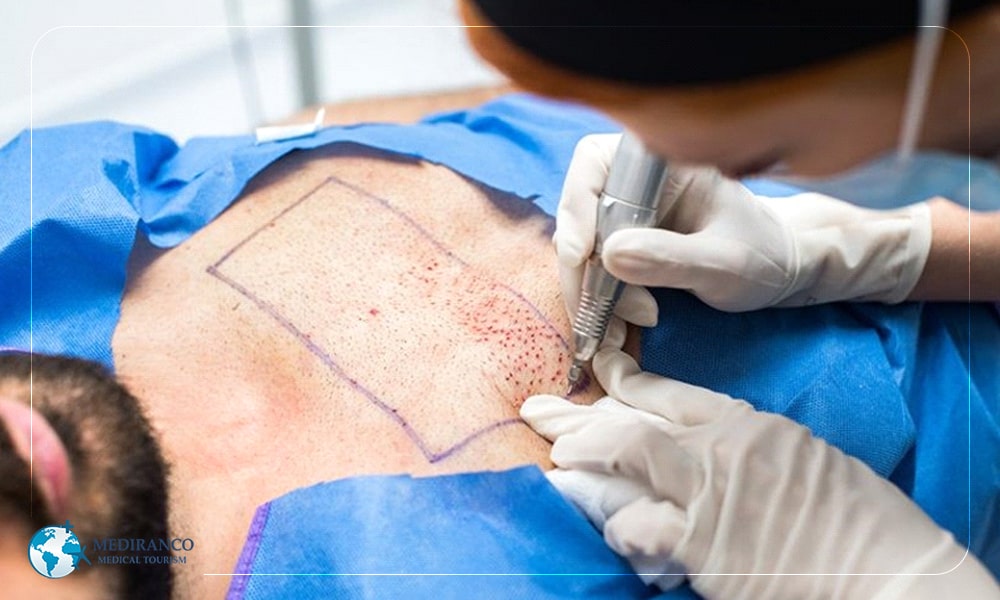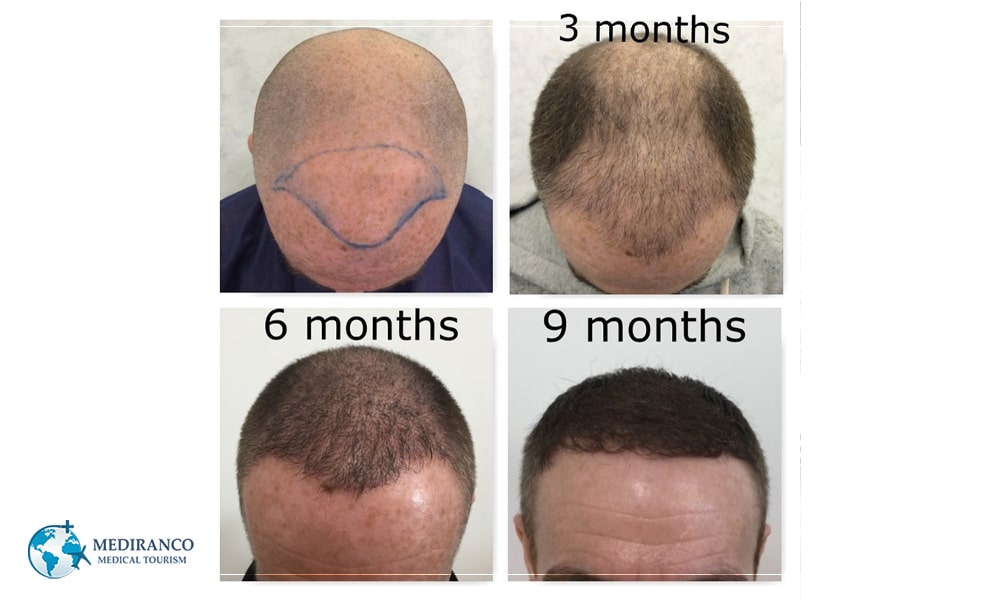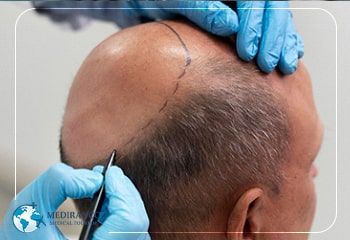Hair loss is a common issue affecting many people globally. It can be caused by factors like genetics, aging, hormones, and stress. Hair transplant surgery is an effective way to restore hair growth, but it may not be suitable for everyone. In cases where there is limited donor hair on the scalp, hair transplant using body hair can be considered. In this article, we will discuss the concept of hair transplant using body hair and its benefits and limitations.
Table of Contents
ToggleIs Hair Transplant using Body Hair Possible?
Yes, hair transplant using body hair is possible. In fact, it has been used successfully for many years to help people with limited donor hair on their scalp. While the traditional approach relies on scalp donor hair, advancements now enable utilizing hair from the body as well. This novel method, known as body hair transplant, provides new possibilities for people with limited scalp donor follicles.

What is Hair Transplant using Body Hair?
Commonly employed techniques for hair transplantation include Follicular Unit Transplantation (FUT) and Follicular Unit Extraction (FUE), both of which rely on viable hair follicles found in the donor site on the scalp.
Body hair transplant, also called follicular unit extraction (FUE) using body hair, extracts hair follicles individually from body areas like the chest, arms, legs, beard, or pubic region. These extracted follicles are meticulously transplanted onto balding areas on the scalp, mimicking conventional hair transplantation principles. For people with insufficient scalp donor hair supply, combining scalp and body hair extraction through FUE body hair transplant (FUE-BHT) can optimize available grafts.
During body hair transplant, the surgeon thoroughly evaluates potential body hair grafts based on attributes like calibre, growth cycle, and curl pattern. This careful selection process aims to match the scalp’s natural hair texture and appearance for seamless integration of transplanted tresses.
To minimize damage to the grafts and facilitate clean extraction, a modified tip hypodermic needle is utilized for graft extraction. Additionally, preoperative treatment with minoxidil can stimulate anagen hair growth, which is less vulnerable to damage during the extraction process.
Benefits and Limitations
Body hair transplantation offers several potential benefits for individuals struggling with inadequate scalp donor hair; including:
- Increased donor supply: Utilizing body hair expands the available donor pool, enabling individuals with limited scalp hair to undergo hair transplantation.
- Natural-looking results: When performed by an experienced surgeon, body hair transplantation can create natural-looking results, especially when combined with scalp hair transplantation techniques.

However, it’s important to note some limitations associated with body hair transplantation; one being different characteristics; Body hair differs in thickness, texture, growth cycle, and growth pattern compared to scalp hair. This can affect the overall aesthetic outcome and may require careful planning and consideration during the transplantation process.
Those with insufficient body hair or expecting dramatic scalp hair density are unlikely candidates. A consultation with a transplant specialist determines candidacy.
How satisfactory is this procedure?
According to a study conducted by Dr. Sanusi Umar, a plastic surgeon specializing in aesthetic surgery, on a Likert-like scale of 0 to 10, patients gave average scores of at least 7.8 for their healing status, hair growth in the recipient areas, and overall satisfaction with their surgeries. These scores were comparable to those of patients who had traditional scalp donor sources.
Results of Hair Transplant using Body Hair
The results of hair transplant using body hair vary based on patients’ needs and expectations. Many patients see noticeable improvements in hair thickness and fullness after the procedure. Initial growth may occur at 2-3 months, but full results can take up to a year as the transplanted hair cycles through shedding and regrowth. Patients reported high scores for transplanted hair growth, especially those using beard hair as a donor source. However, body hair transplant may not achieve the same density as traditional methods. It can still effectively improve the appearance of thinning or balding scalp areas.
While complete scalp coverage is unlikely from body hair alone, combination approaches with scalp hair can produce satisfactory fullness for many patients. Skilled surgeons can create natural-looking frontal hairlines and density in the crown area using body hair. However, the back and sides of the scalp may remain thinner unless supplemented with scalp donor grafts. Patients with reasonable expectations tend to be more satisfied with their results.
Recovery from Hair Transplant using Body Hair
Recovery from hair transplant is similar to traditional hair transplant surgery. Patients may experience some swelling, redness, and discomfort in the days following the procedure. Pain medication and anti-inflammatory drugs may be prescribed to help manage these symptoms.
Patients evaluated the healing of their donor areas, and the results were compared. The average score for healing of the donor areas was higher for patients who received contributions from head and non-scalp areas, with a mean score of 8.9 out of 10. Patients who had beard hair as a donor source also reported a high mean score of 8.7 for healing. On the other hand, patients who received contributions from trunk, limbs, armpits, and pubic hair as donor sources had slightly lower scores for healing, with an average score of 8.1.
Cost of Hair Transplant using Body Hair
Pricing is influenced by case complexity, the technique used, required graft numbers, and surgeon experience. Generally, it is pricier than traditional hair transplant due to extra time and expertise needed for donor hair extraction and preparation.
Medical Tourism for Hair Transplant in Iran
Medical tourism offers cost-effective access to high-quality hair transplant in Iran. Countries worldwide provide advanced facilities and skilled surgeons specializing in hair transplant surgery. Patients opting for overseas treatment can save money while receiving top-notch care. Prior research on clinics and surgeons is crucial for informed decision-making.

